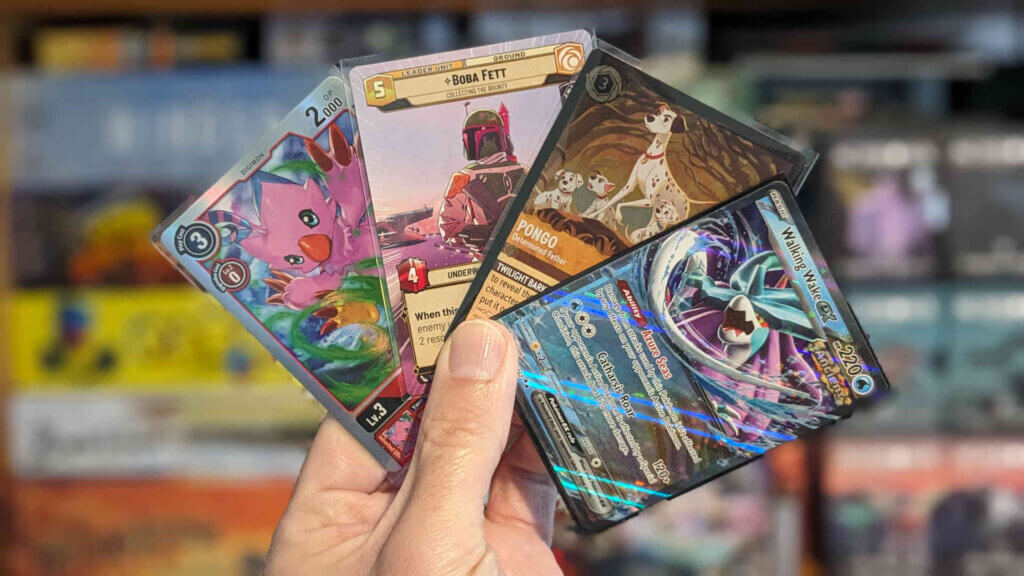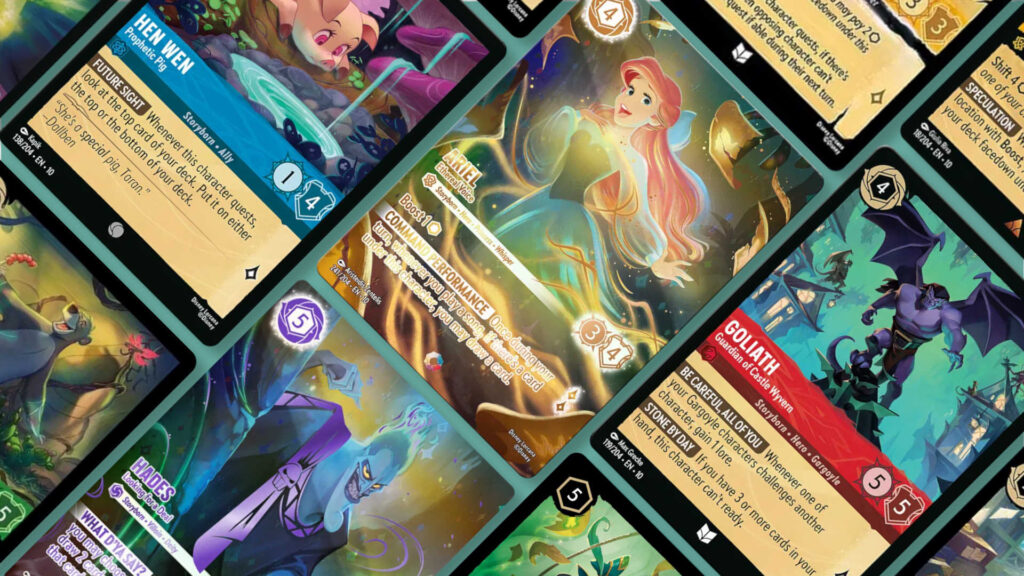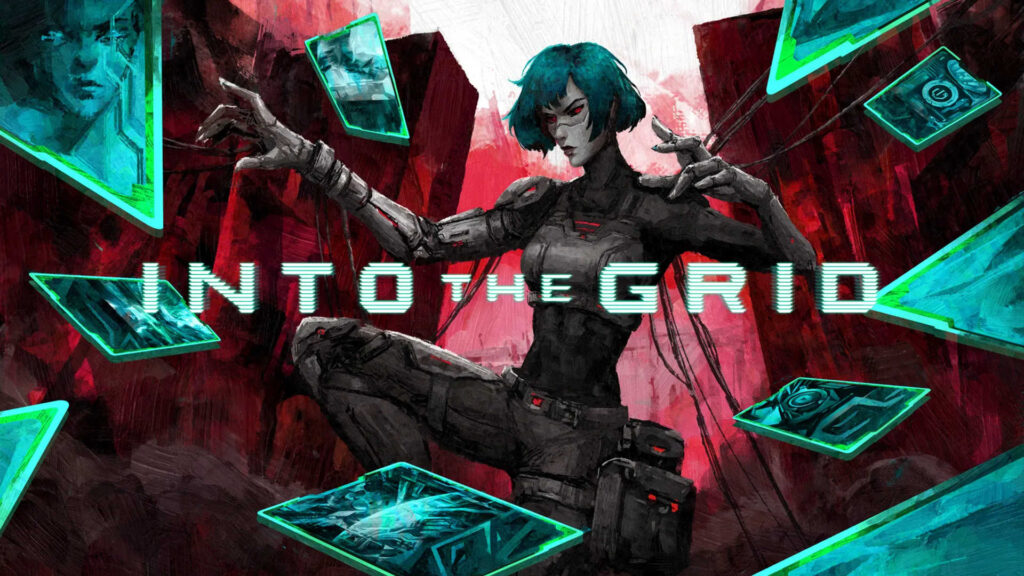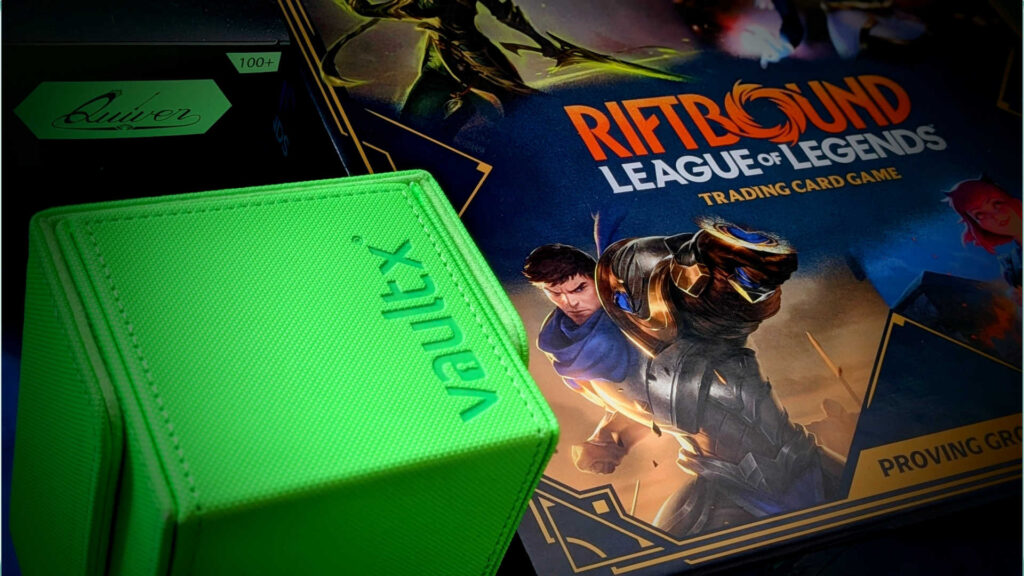It’s time to stock up on booster packs – as we check out the best collectible card games!
Since the release of the very first Magic: The Gathering set in 1993, the number of collectible card games (CCGs) – also referred to as trading card games or TCGs – that have been released is nothing short of incredible.
In the last three decades, countless games – beloved and otherwise – have come and gone, but the collectible card games that are currently surviving and thriving have arguably never been bigger in terms of popularity, nor better in terms of production quality and game design.
With so many popular, widely available collectible card games available right now, which are the best?
Let’s find out, as we take a look at the best collectible card games!
Table of Contents
Toggle1. Magic: The Gathering
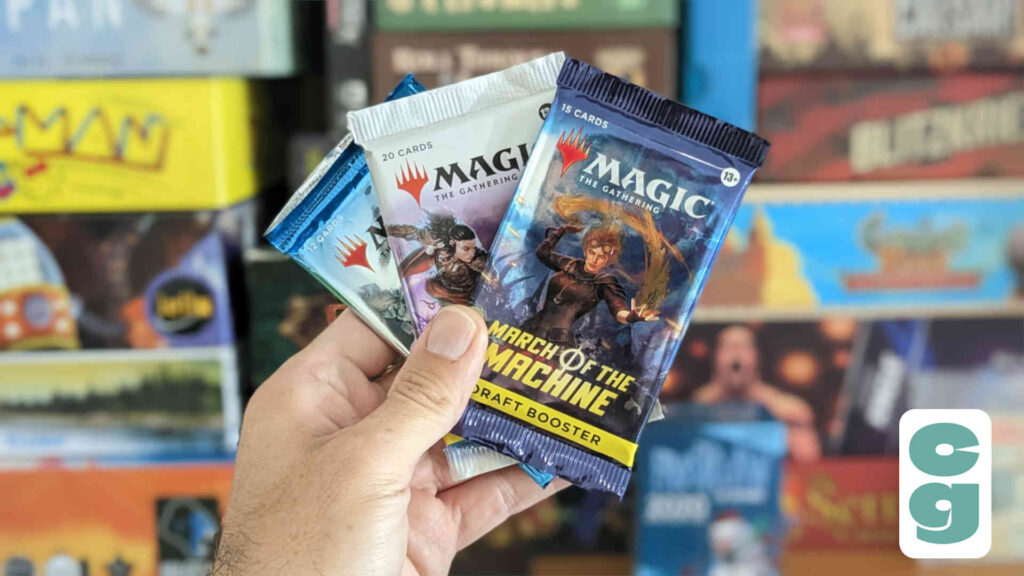
Though it’s perhaps not fair to say that having Magic: The Gathering as our pick for first place is a no-brainer, it’s undoubtedly unsurprising that we’ve chosen it for number one on the list of the best collectible card games.
As the first game of its kind, Magic: The Gathering set the template for the entire subgenre of collectible card games – and publisher Wizards of the Coast have continued to refine, iterate and evolve on the brilliant original design over the last three decades.
Magic: The Gathering has kept itself fresh and relevant through the steady introduction of new mechanics and the adoption of various game formats, meaning that players have plenty of choice in how they want to play the game.
Not only that, but they’ve also done a great job recently of expanding the Magic: The Gathering multiversal setting into familiar franchises, such as Dungeons & Dragons, Warhammer 40k, Transformers and the upcoming Lord of the Rings and Doctor Who sets.
This has no doubt brought fans of those franchises into the fold too, thus expanding the player base for Magic: The Gathering beyond its usual fans.
It’s worked in reverse too, for Dungeons & Dragons – which now features a sourcebook that allows tabletop roleplayers to explore the iconic Magic: The Gathering plane of Ravnica in D&D!
Hugely popular organised play sessions occur worldwide every week – most commonly on Fridays, as part of Wizards of the Coast’s Friday Night Magic initiative – and a packed, regular release schedule means that Magic: The Gathering is constantly played and always evolving.
It’s even easier than ever to play if you don’t know anyone locally to compete against, with the release of the superb MTG Arena on PC (via its own app), Mac, iOS, mobile platforms and even more recently, through Steam too!
2. Pokemon TCG
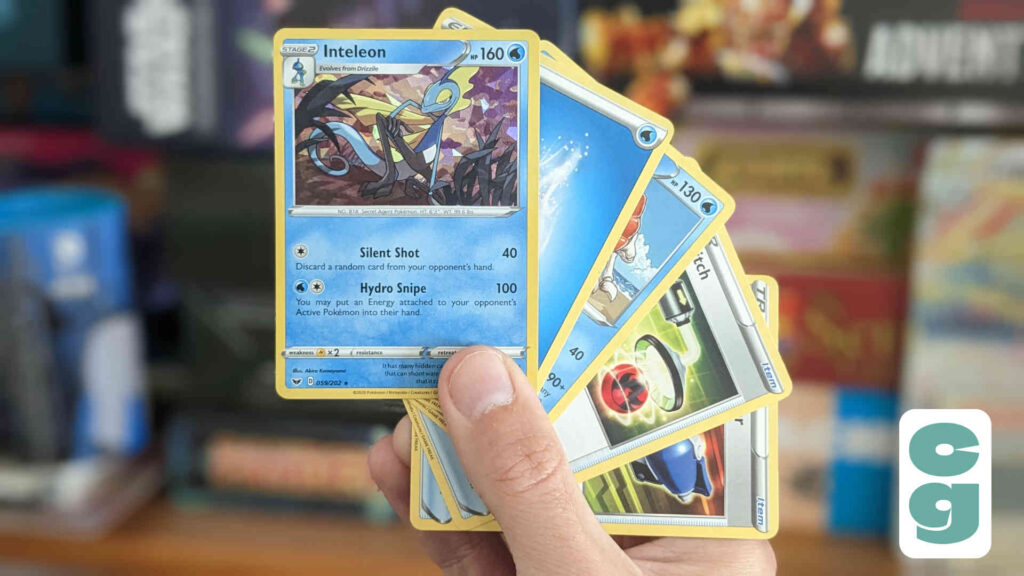
Though it started life as an original Game Boy game back in the mid-90s, Pokemon has expanded hugely beyond its reasonably humble origins.
Not only are the video games now bigger and – arguably – better than ever, but the long running anime, manga and even a live action Hollywood movie attest to Pokemon’s incredibly staying power.
The Pokemon Trading Card Game (TCG) has been going strong for a quarter of a century too, and – like Magic: The Gathering – has managed to not only keep loyal fans interested for decades, but has also managed to continually bring in new players along the way too.
The Pokemon TCG plays similarly to Magic: The Gathering in many ways, with two players using decks filled with creatures and energy cards to take each other on in an attempt to be the very best.
Pokemon’s mechanics are simpler than those found in MTG, however, with the impressively huge roster of creatures – now up to more than 1000 in the video game’s Pokedex – providing a big part of the appeal of the trading card game.
Perhaps the coolest thing about games like Pokemon, Magic: The Gathering and (upcoming on this list!) Yu-Gi-Oh is that, if you played these games decades ago, you could easily pick them up again – albeit with a little bit of a primer on some newer Pokemon card types and keywords.
The basics have remained the same because the game design was so solid immediately.
Like Magic: The Gathering, local gaming groups playing Pokemon can be found just about everywhere too.
Playing Pokemon online via the Pokemon TCG Live app also means you don’t even have to go out of your way to find opponents in real life either!
Given its long standing popularity and its easy to learn, hard to master gameplay, it’s no wonder that we’ve chosen Pokemon to be so highly ranked, on our list of the best collectible card games!
3. Yu-Gi-Oh
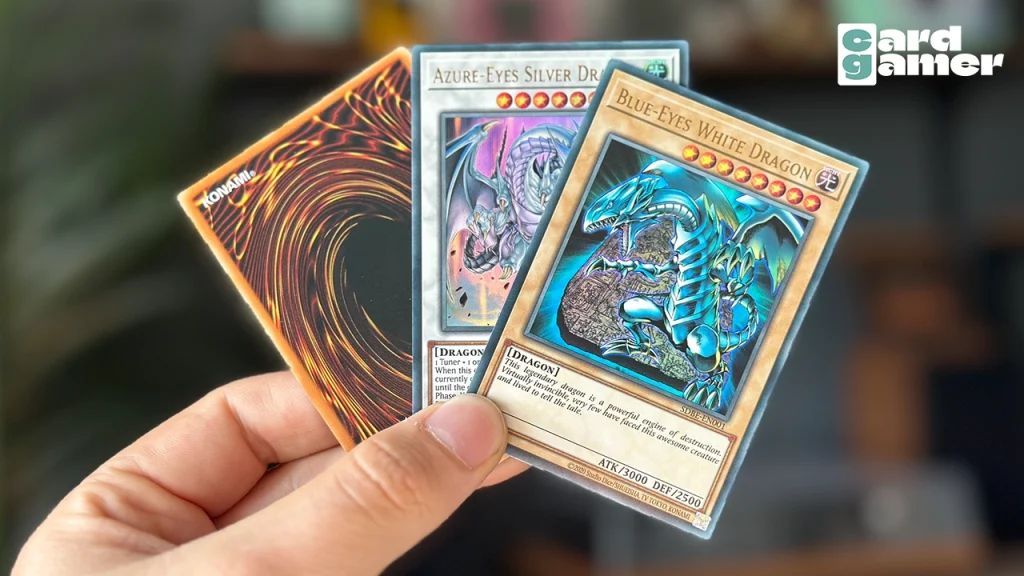
Another similarly long running game, Yu-Gi-Oh was born initially from a manga that ran in Japanese anthology series, Weekly Shonen Jump.
Of course, as with Pokemon the popularity of Yu-Gi-Oh soared when the anime show first emerged.
The fact that the Yu-Gi-Oh manga and anime are based around a then-fictitious card game meant it was a no-brainer to adapt into a collectible card game – and its another CCG/TCG that’s been around since the 90s!
Though Yu-Gi-Oh’s card designs feel more dated in some ways – particularly in their text boxes – than those found in Magic: The Gathering and Pokemon, both of which have seen subtle evolution over the years, the game itself is unique and very cleverly designed.
In particular, the secret laying of traps to lure your opponent in just never gets old!
In contrast to most other card games – including, again, Magic: The Gathering and Pokemon – cards in Yu-Gi-Oh never rotate out of legality.
That is to say that cards you bought a few years ago for Pokemon may no longer be legal to use in tournaments or anything other than casual play settings; in Yu-Gi-Oh, no matter what set your card is from or when you bought it, you can use it in any setting, even tournament play!
Which is fascinating, as it gives players an absolutely jaw dropping number of options for even professional deck building, with over 10,000 cards to choose from!
As with the other games already mentioned, Yu-Gi-Oh has a huge audience and plenty of organised play events occur worldwide on a regular basis, from casual play evenings to massive tournaments.
There are numerous ways to get your Yu-Gi-Oh fix online too, with dedicated games with their own card pools, to more extensive apps that cover a lot more cards.
Try searching for Yu-Gi-Oh on your mobile – it’s amazing how many official apps there are to choose from!
4. Disney Lorcana
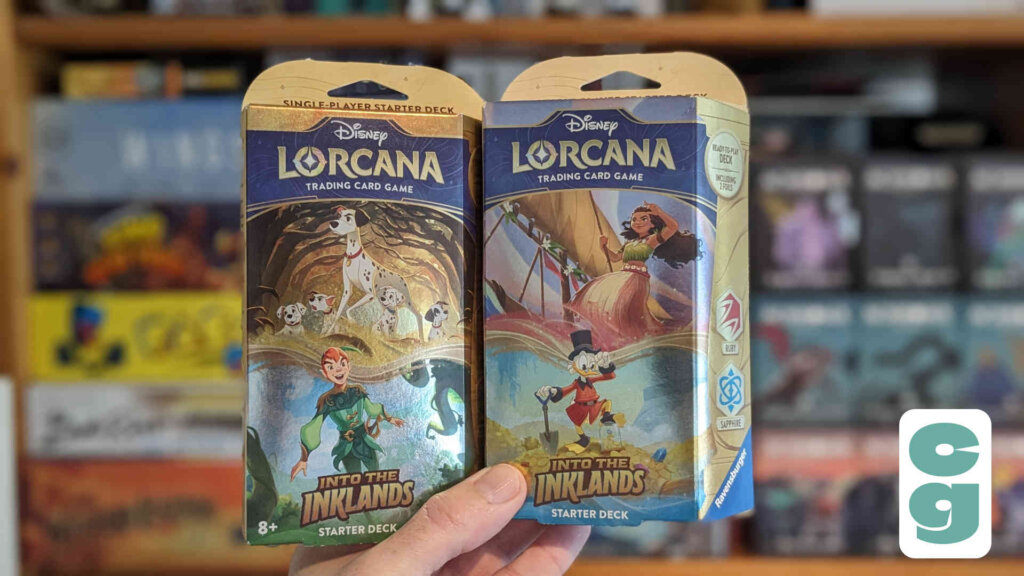
Ever since publisher Ravensburger’s Disney Lorcana was announced, it’s fair to say that it caused quite a bit of buzz in the CCG world.
As Disney’s first ever trading card game, it was bound to be seen as very exciting by Disney fans of all ages, and first glimpses at the cards did not disappoint.
Thankfully, Ravensburger had a fantastic game to back up the beautiful design of the cards too!
Plagued with stock problems month after it was first released in 2023, mostly as a result of supply far outstripping demand, with players, collectors and Disney fans alike clamouring to get their hands on Lorcana cards, when we hear at Card Gamer got our hands on Lorcana we knew it was something special.
In Disney Lorcana, players are cast as Illumineers, essentially wizards able to create Glimmers (which are the game’s characters) from magical Ink.
Decks are constructed of cards featuring up to two different Ink types, from the game’s selection of six, and players take each other on with the aim of being the first to collect 20 points of Lore.
They do this by playing Glimmer cards from their hand, then using these to Challenge (or fight) other characters, as well as sending their own Glimmers on quests to gather Lore.
As the first CCG/TCG that many players may experience, Disney Lorcana is actually pretty straightforward to teach and to learn.
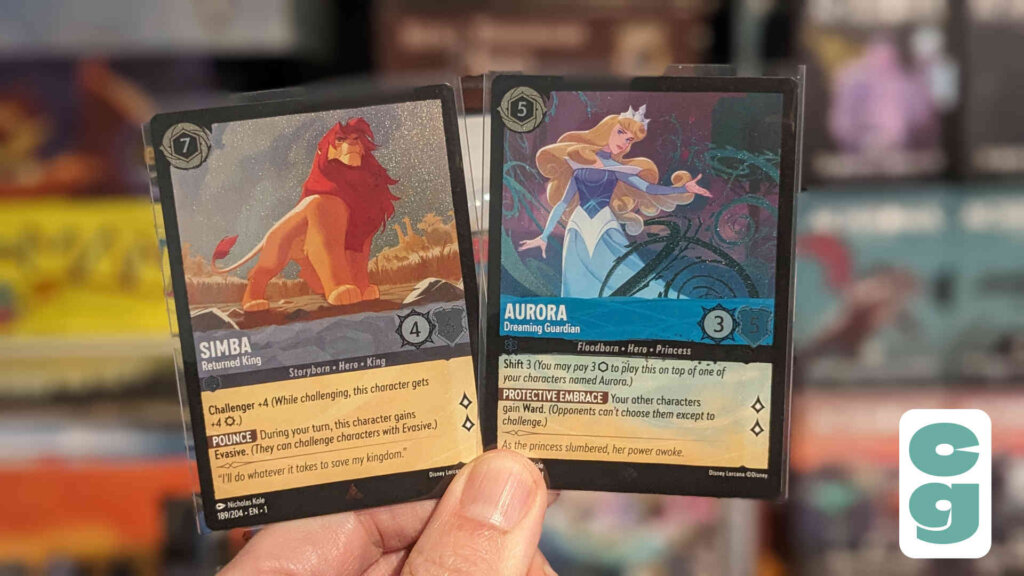
The cards have a clean design with distinct icons for the different elements such as Ink, Strength, Willpower and Lore, and the card text is generally very clear about the different abilities and effects that your cards can provide (along with Glimmers, there are other types of card; for example, event cards known as Songs).
The game’s characters and settings span all 100 plus years of Disney’s history, with cards featuring the cast of Mickey Mouse’s oldest short cartoons, all the way through to recent movies such as Encanto.
With several expansion sets already available (if you want to get started with the game but don’t know where to begin, check out our guide to Disney Lorcana Starter Decks), we’re very confident that the game will have serious longevity.
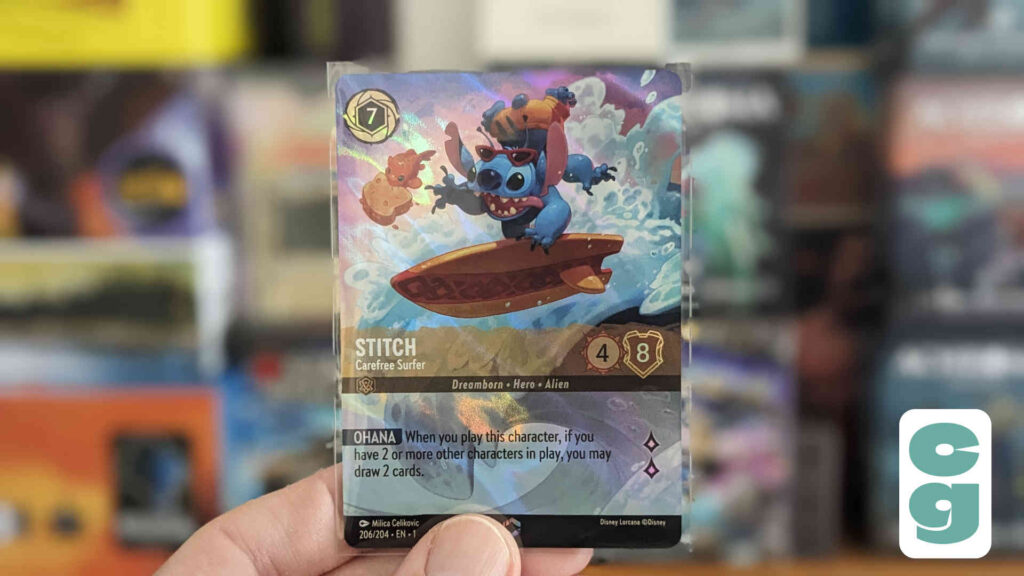
It’s already brought a wider audience into the compellingly addictive world of collectible card games, and numerous cards are becoming highly sought after too; check out our list of the most expensive Disney Lorcana cards for more on that.
We here at Card Gamer believe that Lorcana’s popularity may even end up displacing at least one of the ‘big three’ card games (that’s Magic: The Gathering, Pokemon and Yu-Gi-Oh!) at some point in the future.
It’s already a serious contender, and in a field where countless competitors to the dominance of those three games have struggled to make a mark, it’s genuinely impressive that Ravensburger have been able to do so in such a short space of time, as well as keep the momentum going with subsequent sets.
Ravensburger have truly proven Lorcana’s excellence, beyond the initial excitement of its announceement and first set, and, with new, highly innovative elements such as solo and co-op play already on the way, its star is on course to continue shining for a very long time!
5. Star Wars Unlimited
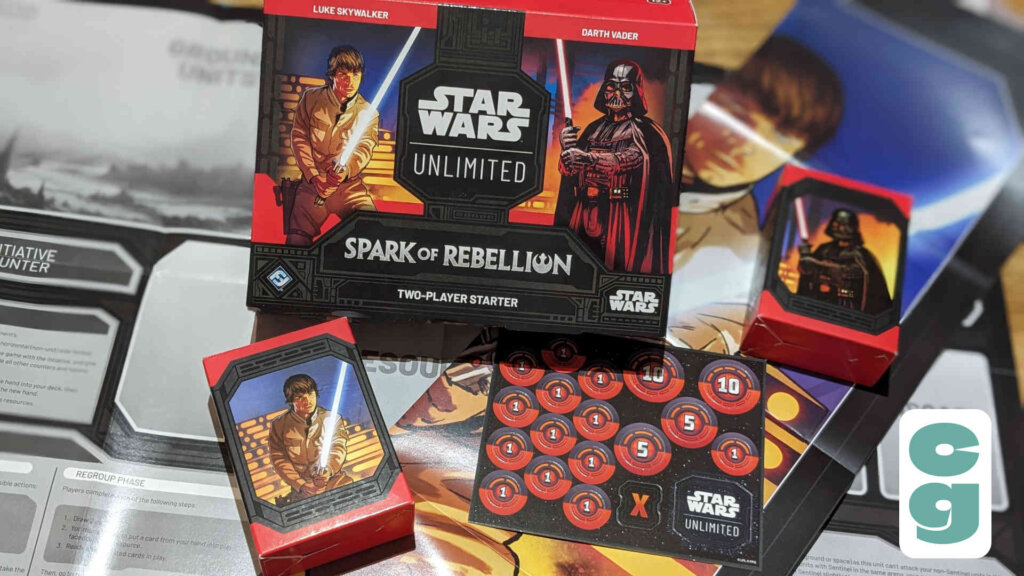
If you’ve checked out my very own History of Star Wars CCGs, you’ll know that Star Wars is definitely no stranger to the world of tabletop gaming.
Not only that, but it’s also long been a fixture of the CCG/TCG scene, despite an absence of Star Wars Collectible Card Games for a good few years now.
Like Disney Lorcana, Star Wars Unlimited’s release is coming at a time when there’s renewed interest in CCGs, thanks in part to Magic: The Gathering’s 30th anniversary (and the huge buzz created by its Lord of the Rings sets), Pokemon’s nostalgia-packed 151 set and another anniversary, with Yu-Gi-Oh celebrating its own quarter of a century.
Some may argue that this means it’s even harder to make a dent in the most popular games, but as Lorcana proved in 2023, there’s definitely room for more games and for more players to be welcomed into the CCG fold.
Star Wars Unlimited takes a similar approach to Lorcana, with clean, appealingly designed cards and accessible gameplay.
Just like Lorcana, it doesn’t do anything spectacular or completely innovative; though many of its mechanics have been seen before in other games, the crucial part is how well it meshes its gameplay elements with the source material, to make a highly thematic, addictive game that feels like much more than the sum of its parts.
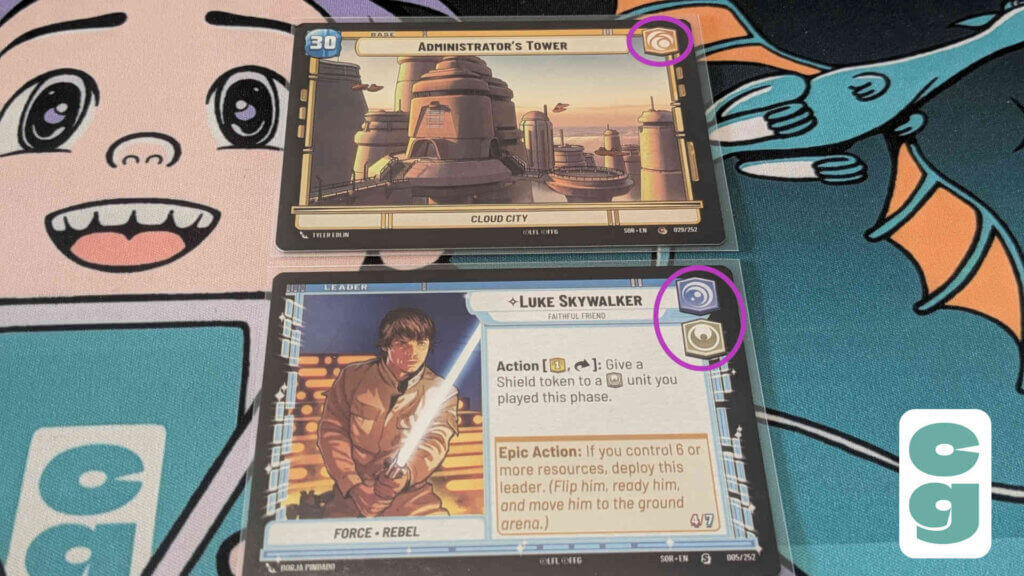
In Star Wars Unlimited, players have a Leader and Base, both of which determine the colours of Aspects (similar to the Mana colours in Magic or the Ink in Lorcana, highlighted in the image above) they can use in their deck.
Players compete to reduce their opponent’s Base to zero health, with their Units being deployed to Ground and Space arenas, being able to attack opposing Units in the same arena or the Base itself.
One of the most ingenious elements of Star Wars Unlimited is a relatively straightforward one, and something that won’t be familiar to many CCG players: each round, players take just a single action before passing over to the other player, continuing until one player takes the initiative (for the next round) or passes, to start a new round.
It keeps things moving at a much faster pace for both players than you’ll find in most other CCGs.
It also mimics the action packed nature of the Star Wars movies and TV shows, with the action, unfolding on the ground and in space simultaneously, also similarly evoking the feel of the source material.
Publishers Asmodee have not just kept the gameplay simple, but also the entire Star Wars Unlimited product range itself, which consists of just a two player Starter Set and booster packs.
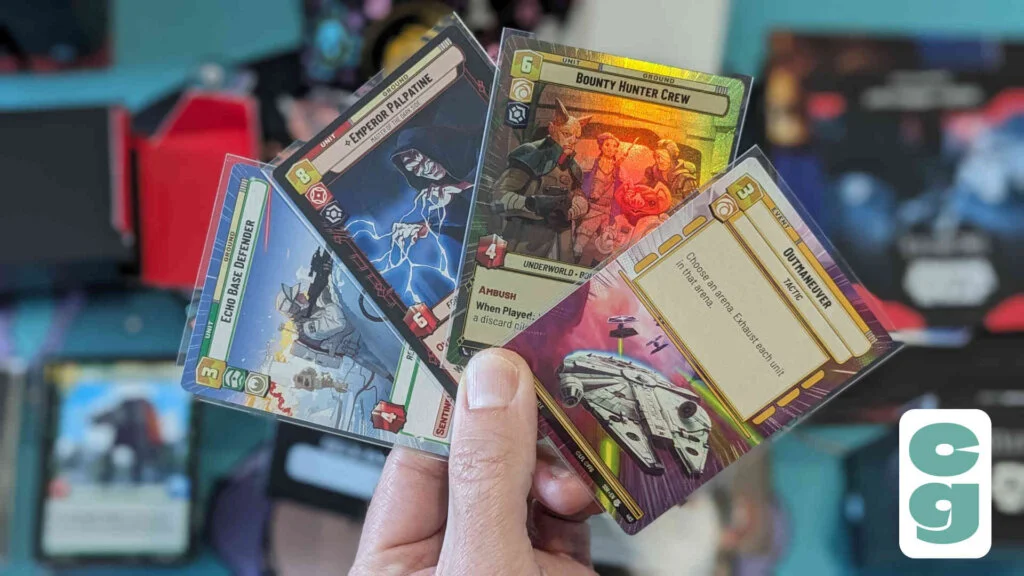
Even the card variants feel restrained and straightforward, making Star Wars Unlimited a game that feels geared towards playing, rather than collecting; this is definitely a refreshing, if subtle, balance in CCGs that many other games take years to get right.
Yet Star Wars Unlimited seems to have absolutely nailed that upon launch.
With many more sets already planned, just like Lorcana we can envisage Star Wars Unlimited being a fixture on the tabletop for many years to come.
6. Flesh and Blood TCG
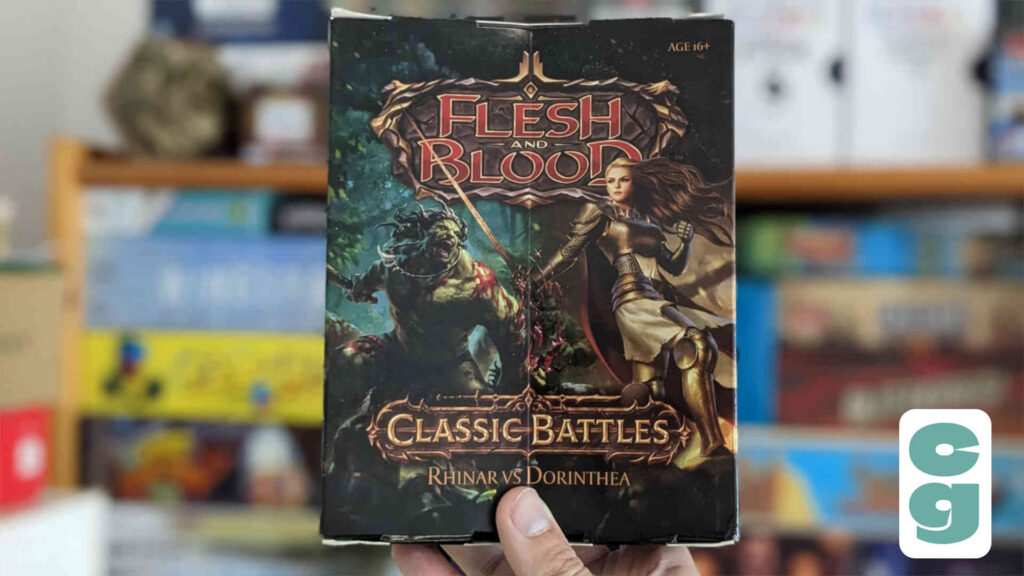
The publishers of the Flesh and Blood trading card game, Legend Story Studios, are headed up by an ex-professional Magic: The Gathering player.
So it’s no surprise that Flesh and Blood immediately tapped into so much of what players love about collectible card games.
The game’s title not only refers to the up close and personal, hard hitting combat between two heroes – which feels a little like classic arcade one on one fighting game, Soul Calibur – but also to the fact that Legend Story Studios want to bring card games fully back to the tabletop in physical form.
In the Flesh and Blood, you see?
To that end – and in stark contrast to most other CCGs/TCGs, Flesh and Blood is built with physical play in mind.
Despite only launching in 2019, Legend Story Studios have built an impressive fan base and play network for Flesh and Blood, with regular events happening internationally on a regular basis – including big tournaments!
Flesh and Blood has beautiful card art, deep (and evolving!) lore, a steampunk style fantasy setting that covers a wide range of cultural influences and a clever set of card mechanics that give it a unique feel.
As mentioned, the Soul Calibur-esque one on one fighting feels like a truly apt comparison, with players taking a single hero into battle with their opponent – and both heroes equipping themselves with weapons and armour before duking it out to the death with their attacks.
Attacks are carried out using ‘The Chain’, which can string different moves together to create devastating combos, again reinforcing that arcade fighting game feel.
It’s a brilliant, hugely satisfying game with dazzling production values, and an already dedicated, ever growing fanbase.
7. One Piece Card Game
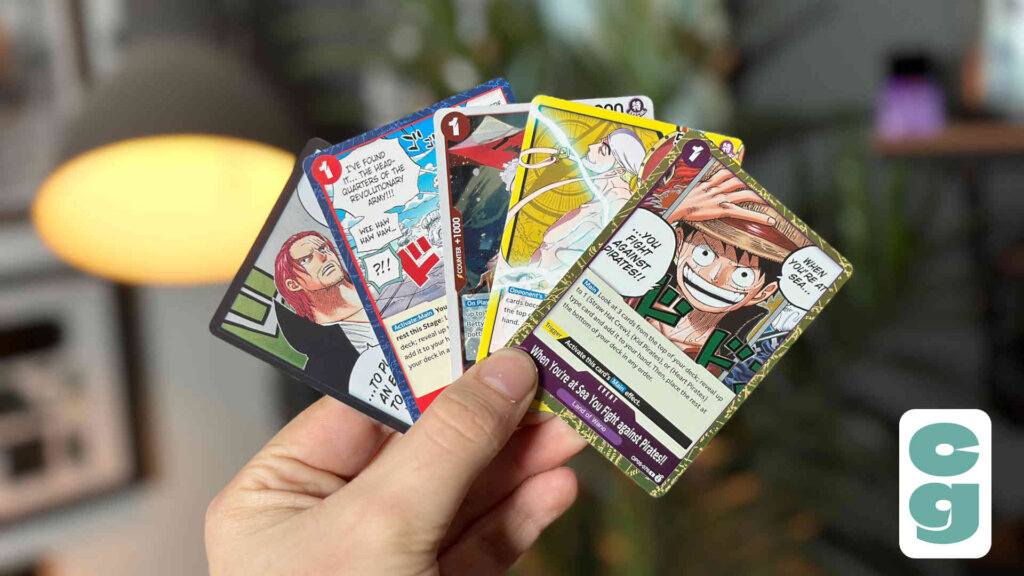
Given that the One Piece saga started way back in the 90s (and it’s still going strong, with the ongoing story reaching a bewildering number of chapters!), it’s perhaps surprising that it hadn’t made a significant dent on the tabletop gaming scene until recently.
Though One Piece CCG was released back in 2003, it failed to make much of an impact, and as a consequence, was fairly short-lived.
However, the current One Piece Card Game, released in 2022, has already made a big splash.
That’s thanks to accessible, yet strategically deep gameplay, as well as some of the most spectacular card art and rare card variants that you’re likely to see in any game.
In the One Piece Card Game, players have a Leader card which determines the colour of cards they can use in their deck; yes, I know that sounds like Star Wars Unlimited, but this concept is basically one that originated in the Commander format of Magic: The Gathering, so One Piece can’t claim to have got there first either!
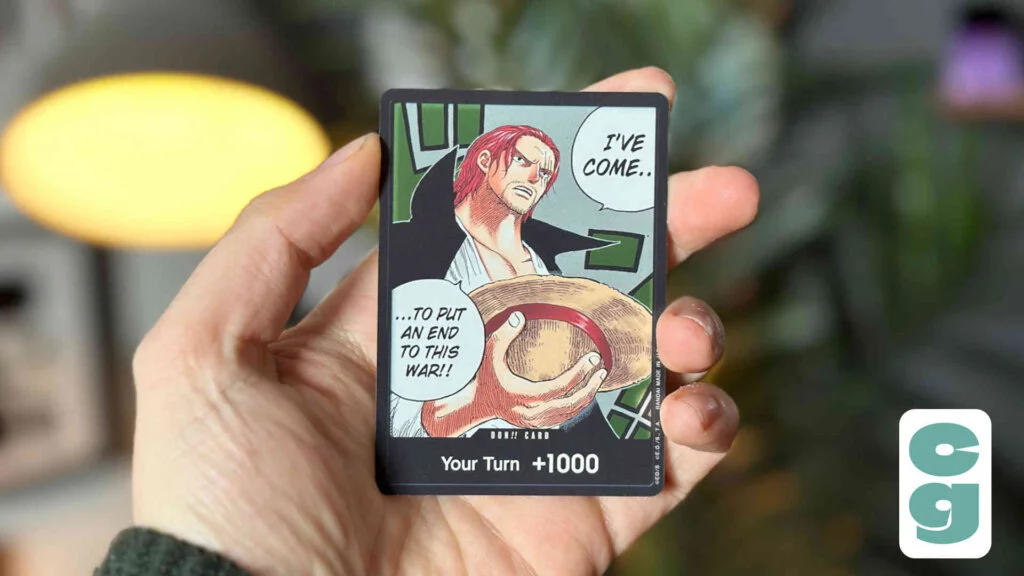
Resources in One Piece come in the form of DON!! cards, which have their own specific deck and are steadily acquired over time; this avoids the issue with a lack of resources that can afflict games such as Magic: The Gathering or Pokemon.
Players have access to other Character cards and Events; the aim is to reduce the opposing Leader’s Life Deck to zero cards.
It’s fast paced, easy to learn and really does feature some incredibly beautiful cards.
In fact, the value of certain One Piece cards has become significantly high, with fans of One Piece clamouring for cards featuring their favourite characters, special art or stunning foil treatments.
This has led to published Bandai struggling to keep pace with demand for the cards, with many stores, particularly in the US, overpricing their One Piece products as a result.
However, if you can get your hands on the One Piece Card Game, you’ll see that it’s an excellent experience to play, as well as exciting to collect.
8. UniVersus
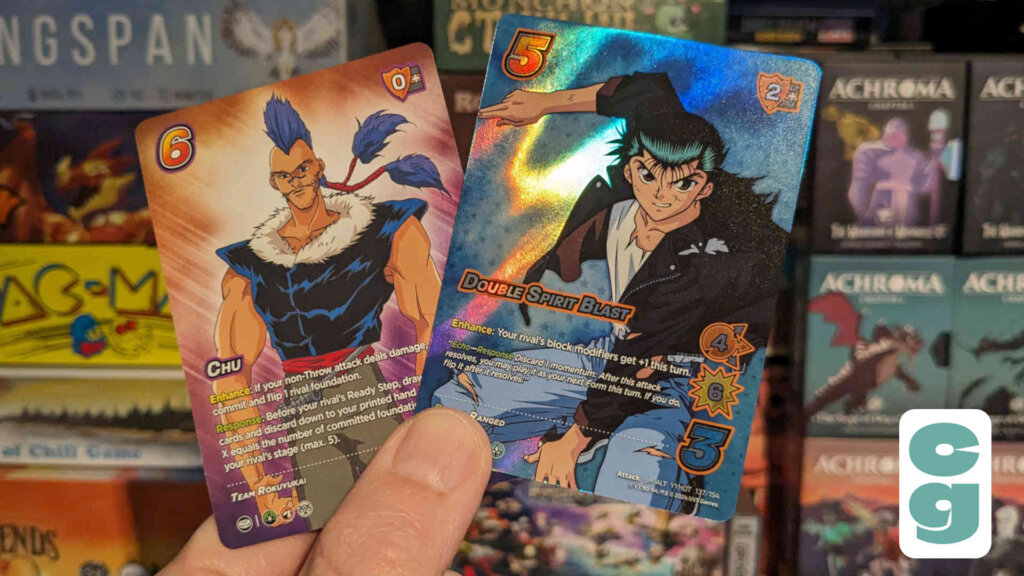
You may not realise this, but UniVersus is one of the longest running games on this list!
Initially launched as the Universal Fighting System (or UFS) back in 2006, it was rebranded in 2021 as UniVersus.
Though it’s focused heavily on My Hero Academia in recent years, at the core of UniVersus is a really interesting concept: no matter which set your UFS or UniVersus card is from, whether that be Street Fighter, Mortal Kombat, the aforementioned My Hero Academia or even Godzilla or Star Trek, all cards are completely compatible with each other.
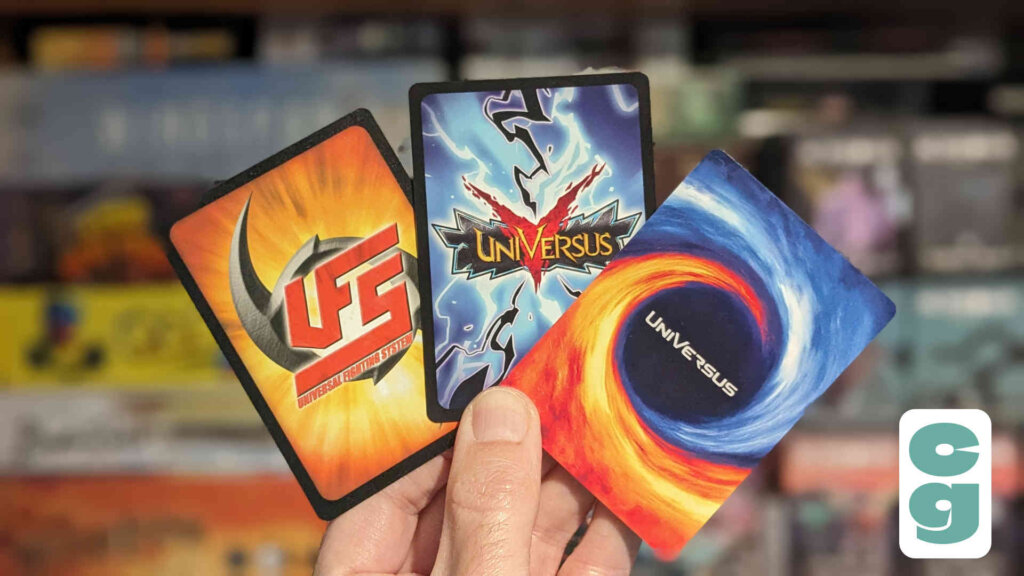
Though the card backs have undergone redesigns as the game has been rebranded and even the front of cards have been updated, they still retain compatibility with each other; as long as you use opaque card sleeves, you’ll be fine to use whatever you want!
In UniVersus, players have a main Character card that they use to fight their opponent’s Character with.
Turns see players chaining together combos of attacks in order to reduce their opponent’s health to zero.
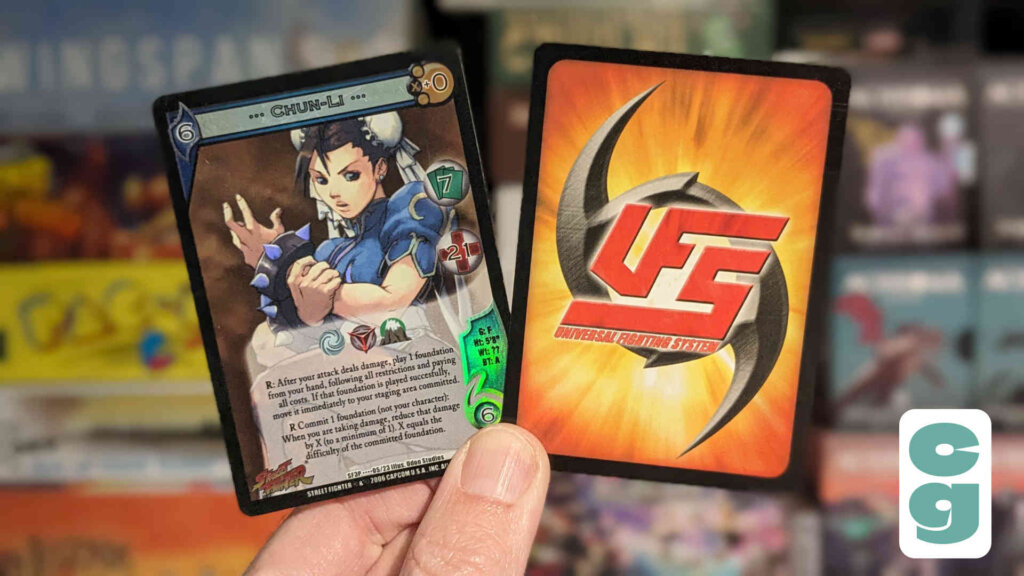
With many of the classic UniVersus sets featuring fighting games, such as the aforementioned Street Fighter and Mortal Kombat, among others, it won’t surprise you that the combo system feels a lot like playing a one-on-one fighting video game.
Excitingly, UniVersus has recently acquired the rights to lots of different franchises; sets for Cowboy Bebop, Trigun Stampede, Godzilla, Star Trek and Tekken, among many others, are joining or have already joined the UniVersus family.
So if you want to take on Godzilla as Heihachi from Tekken, there’s nothing stopping you!
UniVersus is a flexible and appealing game, with a rich history and a bright future ahead of it.
9. Digimon Card Game
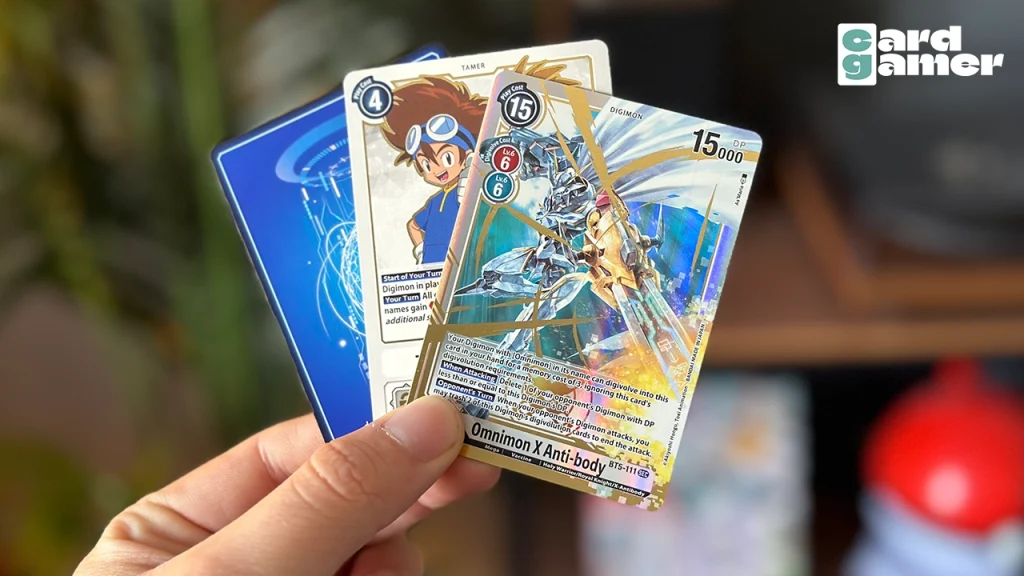
Though often seen as an imitation of Pokemon, Digimon’s origins as a virtual pet device, rather than a video game, makes it much more than that.
It also has a distinctive look and feel, with lots of sci-fi elements, such as mechs, that take it beyond the evolving creature formula.
Just like One Piece, there have been previous Digimon CCGs over the last twenty years or so, which is perhaps one reason that the franchise has struggled to assert itself on the tabletop; unlike UniVersus, prior Digimon card game releases are not compatible with the current version.
Yet despite Bandai’s constant desire to cancel and reinvent their Digimon games, the latest version, which released in 2020, is an excellent experience, and one which we here at Card Gamer hope is the one that finally stays around!
In the Digimon Card Game, players each have a companion Digimon which is placed in the battle area to attack their opponent.
Their Digimon can evolve (another Pokemon comparison!), or Digivolve in the game’s terminology, but what makes it really interesting is that when this happens, you stack the cards in such a way that you keep the previous form’s abilities.
So you’re constantly making your Digimon more powerful, adding to their attacks or abilities, without losing what made them special in the first place.
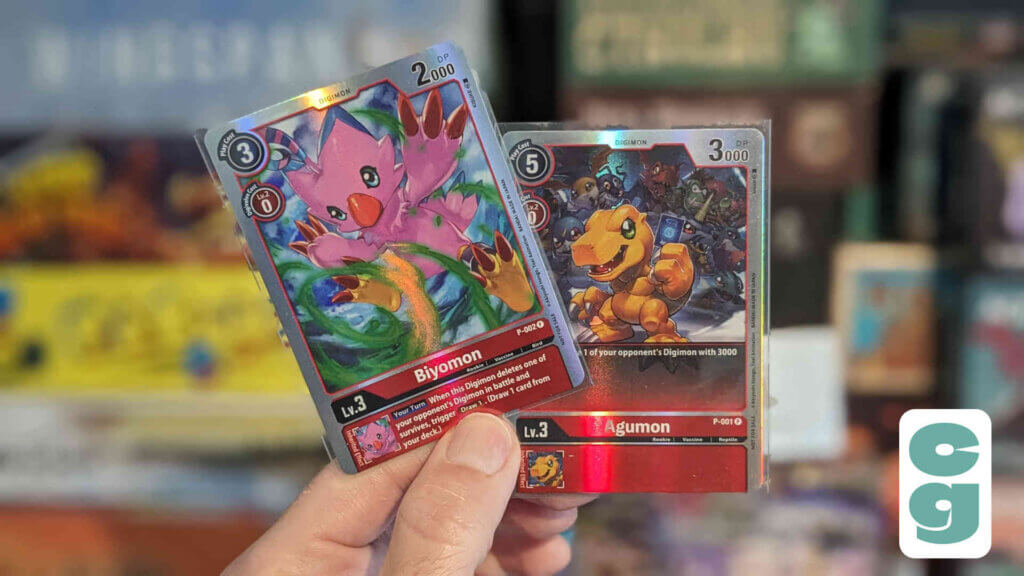
What makes this even more interesting, is that you can digivolve one creature to another as long as the colour matches; it gives the game a huge flexibility in how you approach evolving your cards, way beyond what you can do in games such as Pokemon or Lorcana, for example.
It allows for your deck building to be incredibly personalised around the way that you want your Digimon to digivolve, or the abilities that certain Digimon have, rather than specific evolution forms.
That’s before we even get to the really interesting resource/energy system (Memory) which swings between players depending on the cost of cards played.
The Digimon Card Game definitely deserves a second look and, though Digimon often struggles to escape an unfair comparison with Pokemon, as well as unfortunate issues with availability, the CCG is well worth checking out if you can find it!
10. KeyForge
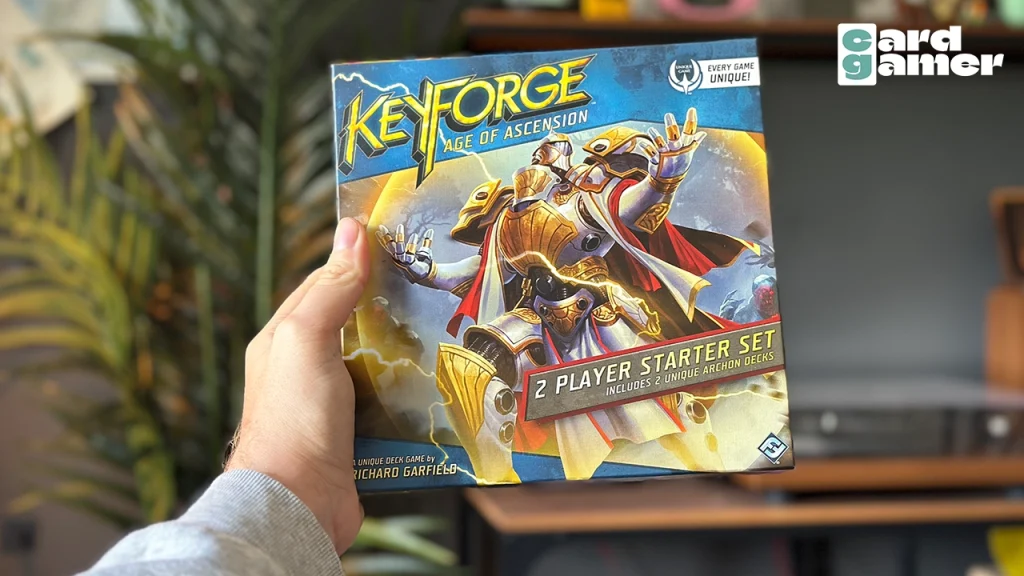
When Magic: The Gathering was released way back in 1993, it changed the entire gaming industry forever.
Creator Richard Garfield had brought an entirely unique concept to tabletop games; no longer were players restricted to playing with shared, fixed decks, but instead they could completely customise their choice of cards from an ever expanding selection.
It was an immediately compelling experience; not to mention a very lucrative one for publishers Wizards of the Coast, given that players were constantly purchasing booster packs in order to have access to more and more cards.
Richard Garfield himself has been responsible for countless innovations beyond the collectible card game concept, and one of those is showcased in the central feature of KeyForge.
KeyForge is based around the ‘unique deck game’ concept; though this perhaps stretches the CCG formula and therefore its inclusion on this list, we still feel that its inclusion here is justified, especially as KeyForge is another brilliant creation from one of the most brilliant game designers in history.
KeyForge’s decks are built by algorithm and are entirely unique; that means they’re randomly put together, but are always entirely functional straight out of the box.
There are numerous factions in KeyForge and your decks will be built with its own unique combination of cards that won’t exist in the same form in any other box or KeyForge pack!
You don’t deckbuild or buy booster packs; instead, getting hold of a KeyForge deck provides its own, fully playable experience immediately.
So once you know how to play, if you want to expand your experience or try out a new combination of factions or cards, just buy a new deck and you can get stuck in straight away!


